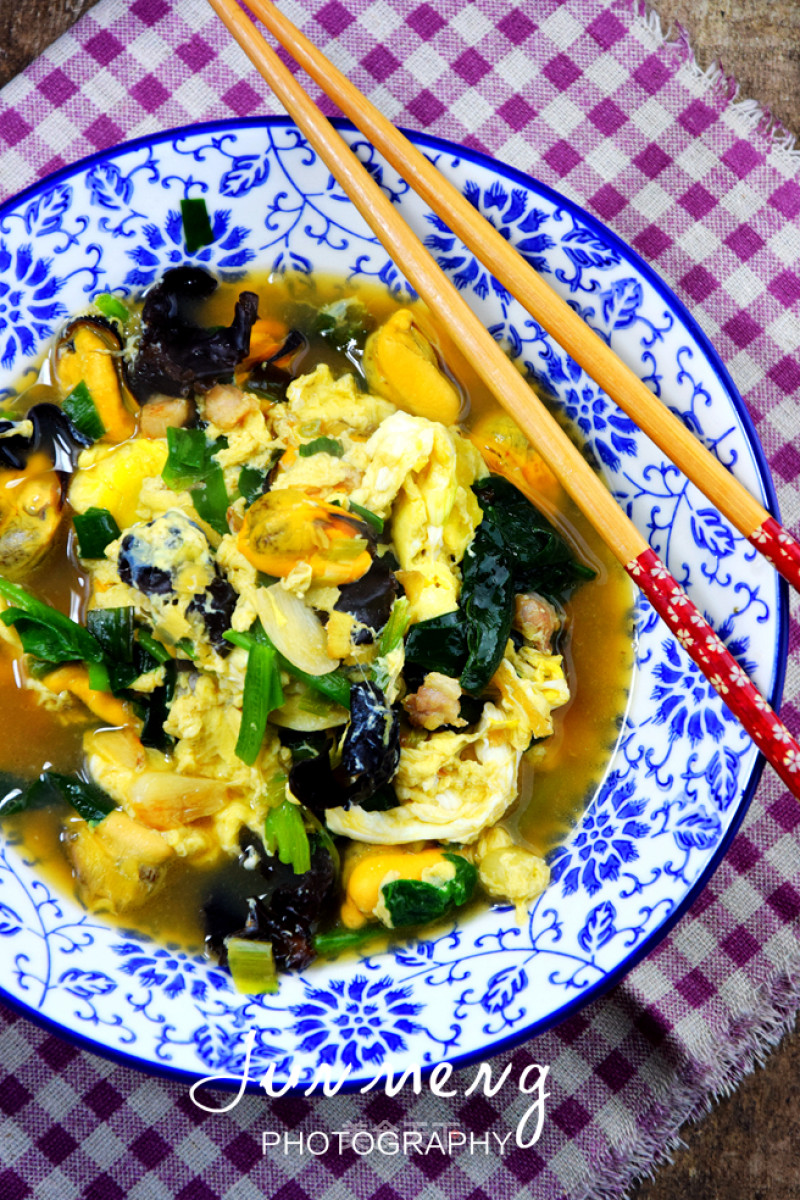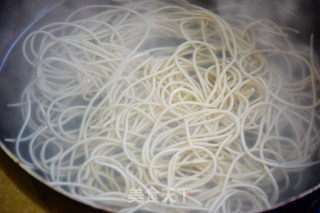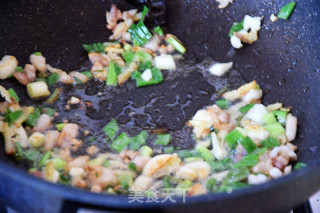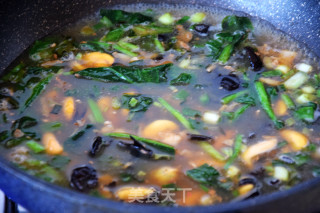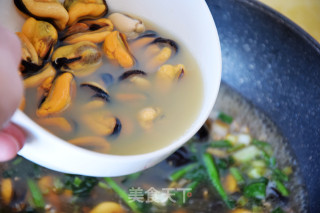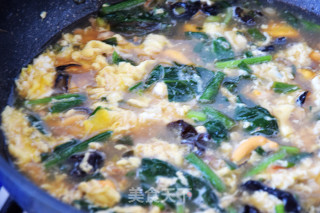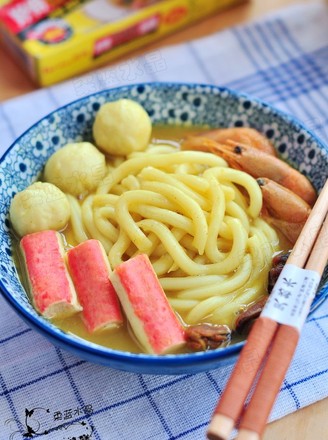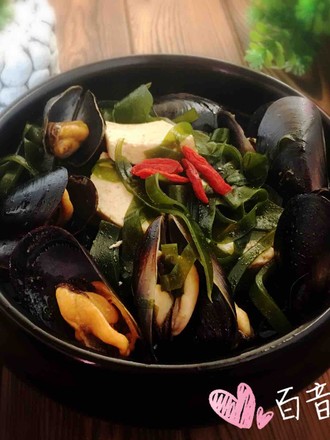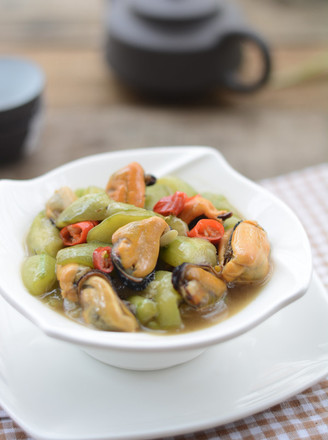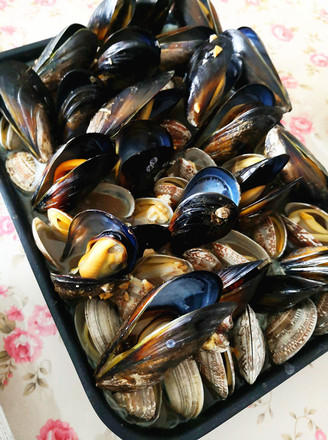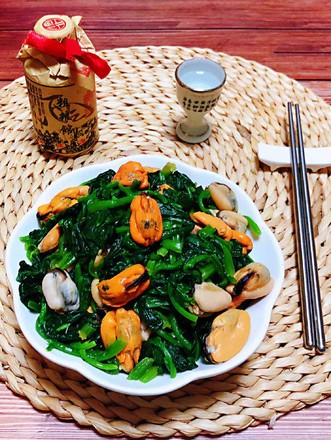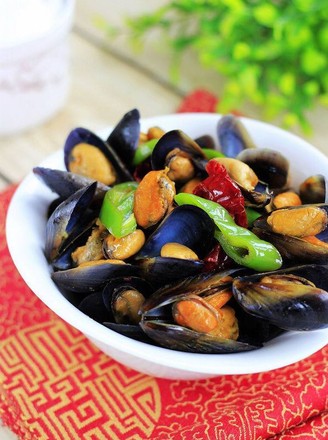Haihong Spinach Noodles
by Jun Meng dark blue
Favorite
Difficulty
Hard
Time
30m
Serving
2
Weihai is one of the birthplaces of Shandong cuisine. It has a long history and is well-known for cooking seafood, and seafood noodles is one of the most popular. The method of making braised noodles is relatively simple. First cook the noodles in boiling water, then put them in cold water for a while, then use some seasonal vegetables to make a bittern, and pour it on the over-watered noodles to eat. Because the cooked noodles have to be spent in cold water, it is also called water noodles. Lomian noodles are delicious, but few people know that the seafood Lomian noodles in Weihai Yuxiang was "forced out of poverty."
At that time, people in the fishing villages had a difficult life. It was very difficult to eat vegetables and meat. It was inevitable that someone in the family would have to eat noodles after a visitor, and it became a problem to cook the bittern. So the people in the fishing village went to the beach to pick up some clams, beat some oysters, boiled clams and oysters into a soup and pour them on the noodles. Sometimes when they met the fishing boats, they also used some fresh fish to be boiled with water, and even the fish was added. The soup is used as a bittern. In winter, because there is no freezing equipment and no fresh fish, the people in the fishing village will use the dried fish to soften and add a little vegetable to make the bittern. In this way, various seafood in the fishing village will be formed over time. Make marinated seafood and marinated noodles. Because there was a shortage of oil and meat at that time, seafood was almost boiled in clean water, so it tasted more fishy, and many outsiders did not like to eat it.
With the continuous improvement of people's living standards, people not only eat to fill their stomachs, but also pay attention to nutrition and taste. People in Yuxiang have also changed their ways to make seafood marinated noodles more delicious. For example, for the braised clams that I eat now, first add water to steam the clams, boil them into milky white clam soup for later use, then add oil to the pot, stir-fry the meat with green onion, ginger, and add clam soup and seasonal vegetables. Add some cooked clams in shell. The stew made in this way has the fragrance of meat, clams, and the greenish green of vegetables. When eating, pick up a small clam with a shell and put it in your mouth. Use your teeth to gently squeeze the delicious clam. The meat with the juice will make your lips and teeth fragrant. Think about it, is it unique to eat such a bowl of marinated noodles?
The use of fresh fish to make marinated fish is also particular about fish, and it is best to use barracuda, black fish, matchmaker, etc. Put these fish in a pot and boil them. After they are cooked, remove the fish head and the big thorn in the middle, cut the fish into small pieces, and add the delicious fish soup with the boiled fish. A bowl of fish is used as a stew. The noodles are made. Later, people evolved into a pot stew, that is, these fish are boiled in a pot, and the fish heads and thorns are removed after they are cooked, and then the fish is cut into small pieces and placed in a pot full of fish meat and fish soup. Put the noodles, the fish and the noodles are repeatedly cooked together in the pot. This kind of noodles not only has the wheat flavor and somersault of the noodles, but also the tenderness and deliciousness of fresh fish. It is also fish and noodles.
In addition to using fresh fish for marinating, the people of the fishing village also make dried pike, tail fish, mackerel, sea eel, etc., and store them in the winter. When making noodles, the dried fish is soaked in water and cut into small pieces. Cabbage, leeks, spinach and other vegetables are made into dried fish and seafood stew, which still tastes delicious. Use dried seafood to make bite. The best ingredient is Spanish mackerel roe. The Spanish mackerel roe dried in spring is hard, cut into small slices with a knife, each slice is shiny, put it in the brine, and eat a piece from time to time, it is chewy, tastes and fragrant, it is endless aftertaste. If you cut the mackerel roe into slices and minced meat to make a deep-fried sauce, add some cucumber shreds and mix it in the noodles. The minced meat, fish roe and noodles fragrant together, accompanied by the fresh cucumber shreds. It has a unique taste and full of fragrance.
Today, with people’s interest in seafood, the originally humble seafood marinated noodles have also been taken from ordinary people’s tables to the elegant halls of restaurants and hotels, where people are interested in tasting fisherman’s unique delicacies. I feel the depth and longevity of the fishery’s food culture. "
At that time, people in the fishing villages had a difficult life. It was very difficult to eat vegetables and meat. It was inevitable that someone in the family would have to eat noodles after a visitor, and it became a problem to cook the bittern. So the people in the fishing village went to the beach to pick up some clams, beat some oysters, boiled clams and oysters into a soup and pour them on the noodles. Sometimes when they met the fishing boats, they also used some fresh fish to be boiled with water, and even the fish was added. The soup is used as a bittern. In winter, because there is no freezing equipment and no fresh fish, the people in the fishing village will use the dried fish to soften and add a little vegetable to make the bittern. In this way, various seafood in the fishing village will be formed over time. Make marinated seafood and marinated noodles. Because there was a shortage of oil and meat at that time, seafood was almost boiled in clean water, so it tasted more fishy, and many outsiders did not like to eat it.
With the continuous improvement of people's living standards, people not only eat to fill their stomachs, but also pay attention to nutrition and taste. People in Yuxiang have also changed their ways to make seafood marinated noodles more delicious. For example, for the braised clams that I eat now, first add water to steam the clams, boil them into milky white clam soup for later use, then add oil to the pot, stir-fry the meat with green onion, ginger, and add clam soup and seasonal vegetables. Add some cooked clams in shell. The stew made in this way has the fragrance of meat, clams, and the greenish green of vegetables. When eating, pick up a small clam with a shell and put it in your mouth. Use your teeth to gently squeeze the delicious clam. The meat with the juice will make your lips and teeth fragrant. Think about it, is it unique to eat such a bowl of marinated noodles?
The use of fresh fish to make marinated fish is also particular about fish, and it is best to use barracuda, black fish, matchmaker, etc. Put these fish in a pot and boil them. After they are cooked, remove the fish head and the big thorn in the middle, cut the fish into small pieces, and add the delicious fish soup with the boiled fish. A bowl of fish is used as a stew. The noodles are made. Later, people evolved into a pot stew, that is, these fish are boiled in a pot, and the fish heads and thorns are removed after they are cooked, and then the fish is cut into small pieces and placed in a pot full of fish meat and fish soup. Put the noodles, the fish and the noodles are repeatedly cooked together in the pot. This kind of noodles not only has the wheat flavor and somersault of the noodles, but also the tenderness and deliciousness of fresh fish. It is also fish and noodles.
In addition to using fresh fish for marinating, the people of the fishing village also make dried pike, tail fish, mackerel, sea eel, etc., and store them in the winter. When making noodles, the dried fish is soaked in water and cut into small pieces. Cabbage, leeks, spinach and other vegetables are made into dried fish and seafood stew, which still tastes delicious. Use dried seafood to make bite. The best ingredient is Spanish mackerel roe. The Spanish mackerel roe dried in spring is hard, cut into small slices with a knife, each slice is shiny, put it in the brine, and eat a piece from time to time, it is chewy, tastes and fragrant, it is endless aftertaste. If you cut the mackerel roe into slices and minced meat to make a deep-fried sauce, add some cucumber shreds and mix it in the noodles. The minced meat, fish roe and noodles fragrant together, accompanied by the fresh cucumber shreds. It has a unique taste and full of fragrance.
Today, with people’s interest in seafood, the originally humble seafood marinated noodles have also been taken from ordinary people’s tables to the elegant halls of restaurants and hotels, where people are interested in tasting fisherman’s unique delicacies. I feel the depth and longevity of the fishery’s food culture. "

